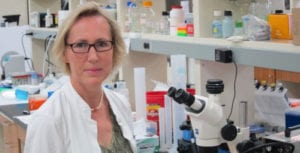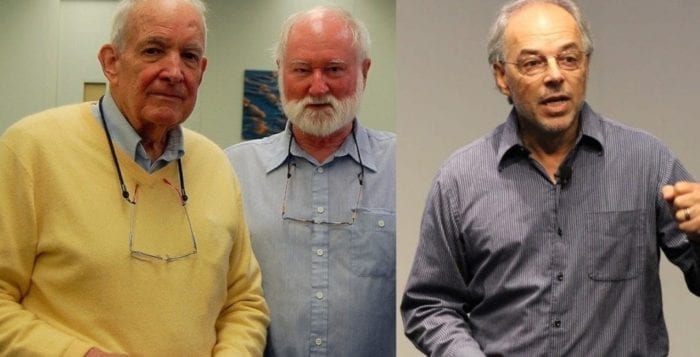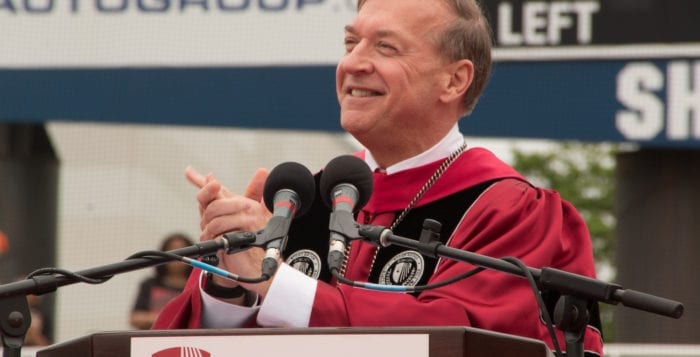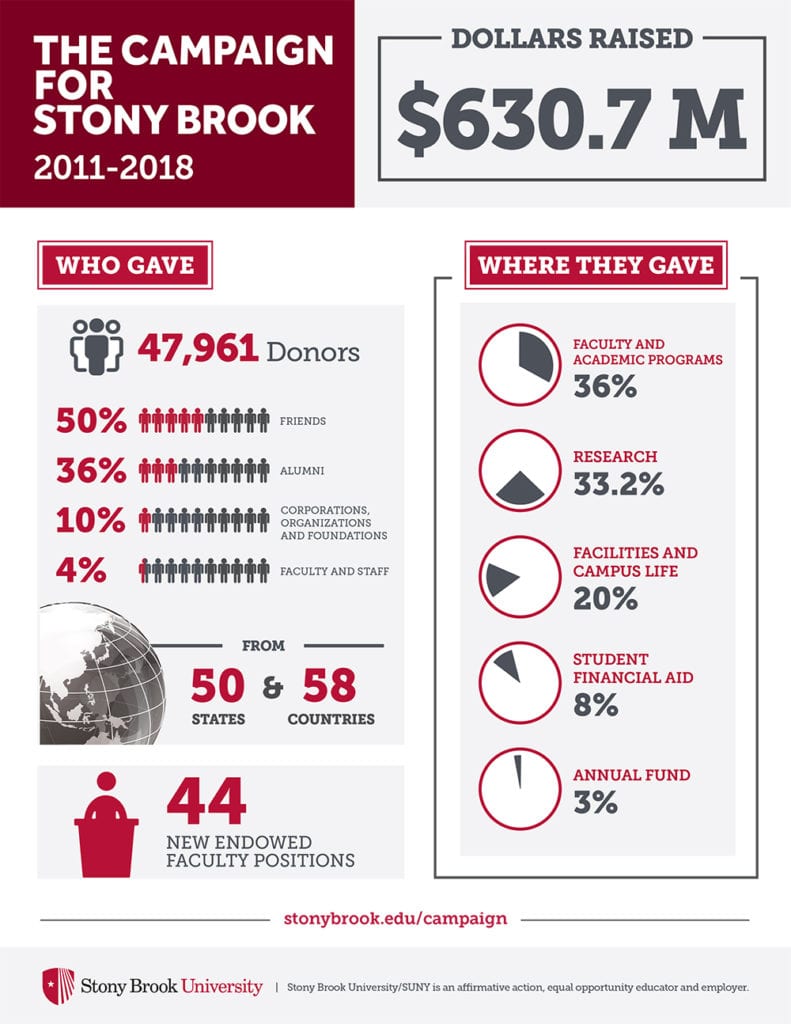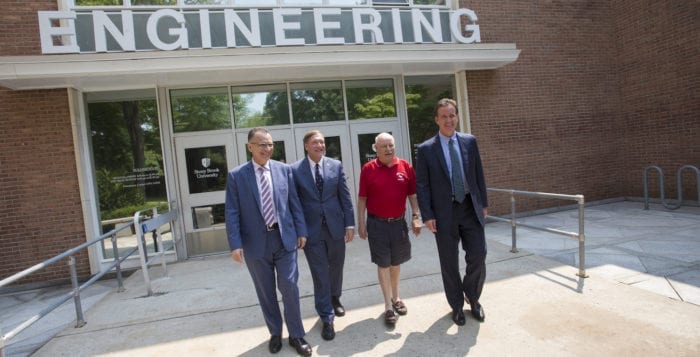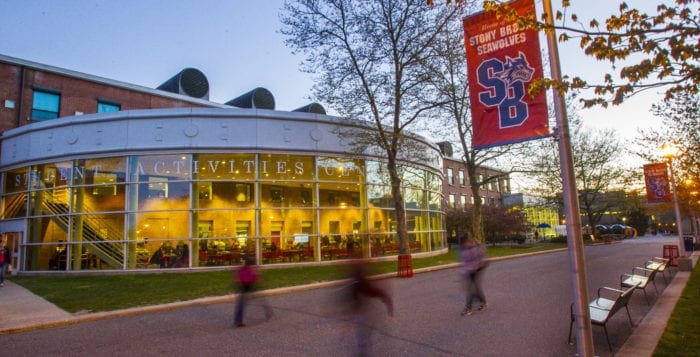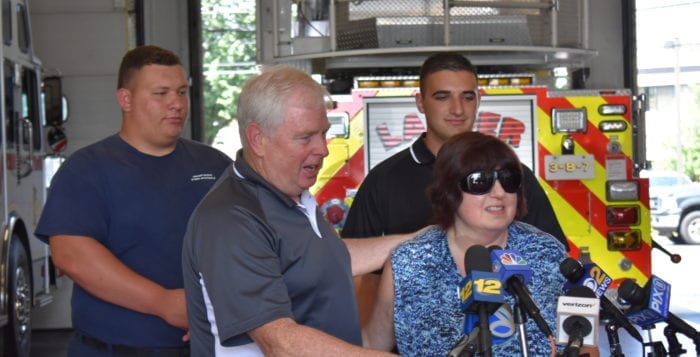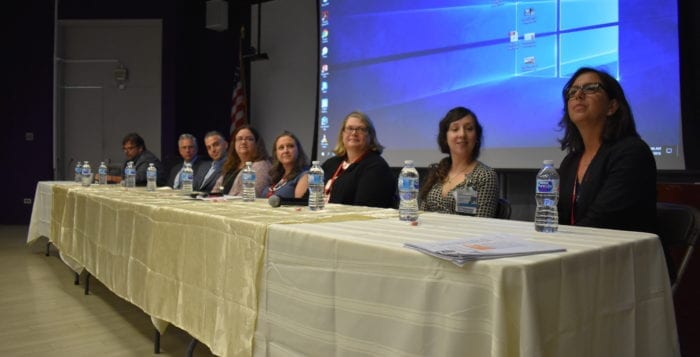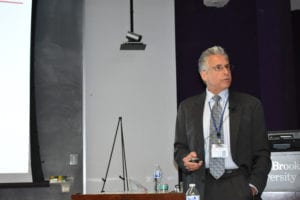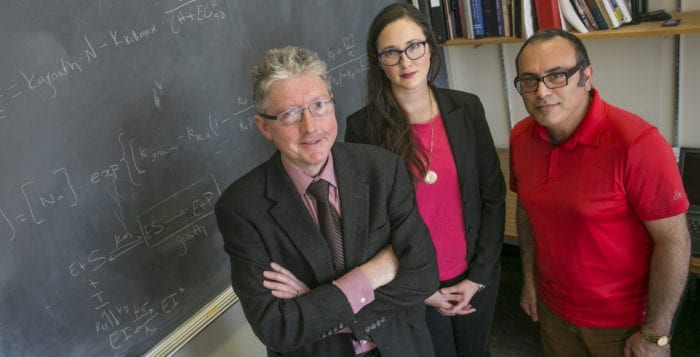A young dancer has come through a cancer battle with the poise and grace of a prima ballerina.
More than a year ago, 12-year-old Delaney Unger, of Selden, was diagnosed with osteosarcoma, a rare type of bone cancer, in her left distal femur. Now cancer free, she reunited with the Stony Brook University Hospital doctors who provided her a way to dance with her St. James studio again at a Sept. 10 press conference.

Dr. Fazel Khan, an orthopedic oncologist surgeon, said doctors diagnosed Delaney with cancer above her left knee joint in December 2016. While given a few treatment options, including knee replacement, she and her family decided in order to have an active life she would undergo rotationplasty surgery, also known as the Van Ness procedure, which involves partial amputation followed by use of a prosthesis.
Khan said the operation involved amputating Delaney’s diseased knee, then doctors rotated her ankle 180 degrees and placed it in the position of the knee joint. It was attached to the remaining thigh to create a functional, natural joint. This results in a shorter leg with the foot and toes facing backward.
“The beauty of that solution is that you now control your ankle as if it’s your knee,” Khan said, adding it takes a lot of training and perseverance on the patient’s part to adjust.
Delaney’s mother, Melissa, said when her daughter began experiencing pain in her knee she and her husband, Noah, thought she had overworked it between dancing and gymnastics — maybe pulling a muscle. A pediatrician sent Delaney for an X-ray that showed a mass on her femur and an appointment was made with an oncologist.
“At that point, everything stopped,” Unger said. “Our world would forever be classified as before cancer and after cancer.”
During the press conference, Delaney demonstrated how easy it was to remove and put on her prosthesis that she has worn for the past year. It fits over her backward foot and extends up the thigh.
Khan said while knee replacement works well for people who are older, it may not be the best solution for younger people who are active.
“All my patients inspire me, but I’ve never seen somebody that is 11 years old, and now 12 years old, who has been so strong, so inspiring and so courageous in all of this.”
— Dr. Fazel Khan
“You can wear a prosthesis after [the amputation], and you can jump around or dance on that prosthesis as much as you like, and if it wears out, you can put a new prosthesis in there.” Khan said.
Plastic surgeon Dr. Jason Ganz, who worked with Delaney, said he has kept in touch with the family through emails and videos. He said it was wonderful to see how far she has come since the diagnosis, and she looked incredible.
Khan said he was inspired by Delaney who decided that despite cancer she would not give up on her dancing dreams.
“All my patients inspire me, but I’ve never seen somebody that is 11 years old, and now 12 years old, who has been so strong, so inspiring and so courageous in all of this,” the surgeon said.
Unger said Delaney used crutches for approximately a month after the operation and could walk unassisted after two months. In May 2018, she danced in St. James-based Chorus Line Dance Studio’s annual recital.
“Delaney has always had lots of confidence, drive and determination,” her mother said. “All of these traits have helped her to fight her battle and come through the other side.”
Delaney said she hopes sharing her story will help children going through the same thing. Using social media, she has been able to connect with others who had the same type of cancer and underwent the Van Ness procedure. She said even though having an ankle for a knee and wearing a prosthesis took time adjusting to, now it feels normal and sometimes she forgets she has one.

The soon-to-be 13-year-old said she continues to study ballet, tap, jazz lyrical, contemporary and hip-hop, and plans to try out for Selden Middle School’s kickline team. Delaney said sometimes the prosthesis affects her dancing as she can’t balance as well on her left leg; however, its more flexible now, so she choses to do her leg hold with her left side. She also said she can kick fine with both legs.
Delaney thanked the doctors who helped her and had kind words for the Stony Brook hospital staff.
“The child life specialists helped to put a smile on my face every day,” she said, adding Friday was her favorite day because therapy dogs would come to visit.
While dancing still takes up a considerable part of her life, she has new dreams.
“[The doctors] have inspired me to want to become a pediatric oncologist,” Delaney said. “I want to help other children do their treatments, and I want to research causes and new treatments for cancer.”
Her mother said Delaney has already been an inspiration to many.
“People have said that her attitude and outlook on life, even now going through cancer, has helped them,” the mother said. “They’ll stop and think, ‘Say, wait a minute, Delaney is going through this right now, I can handle this problem today.”



